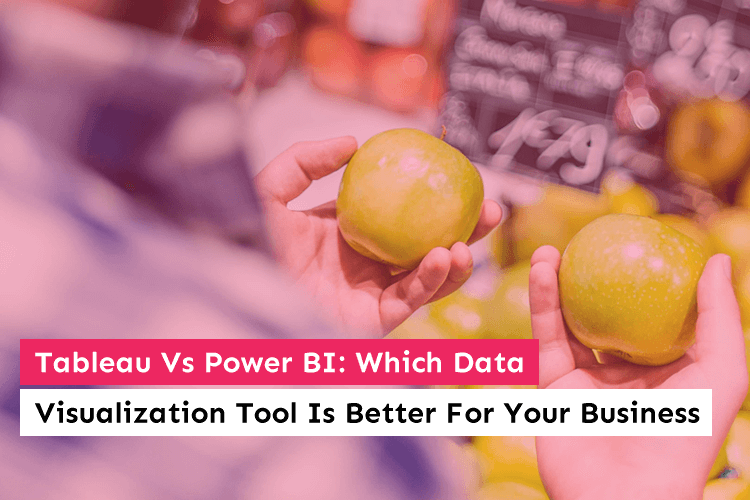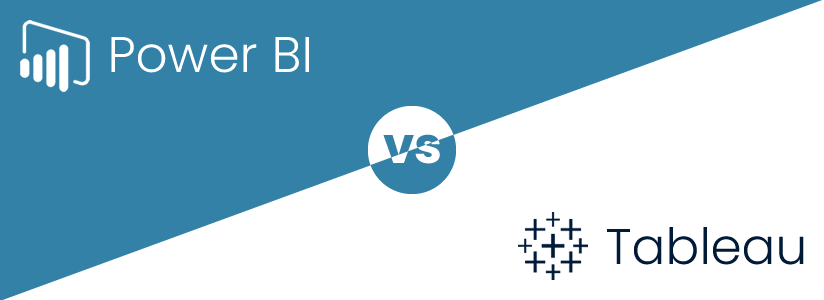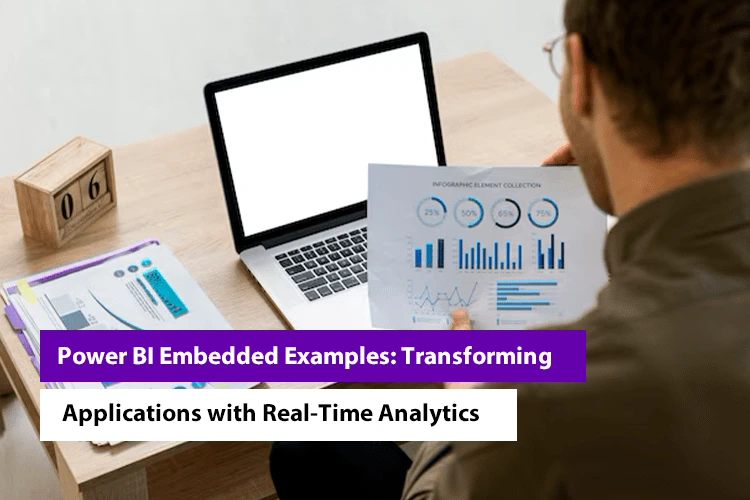Tableau vs. Power BI: Which Data Visualization Tool is Best for Business?

Managing a company’s data is a whole process in itself, from assembling data on a centralized server of all the departments to presenting it for the annual reports. It is a task. That is why big corporations across all industry verticals now have full-time data analysts to study data and abstract insights from it.
Data analytics and Power BI Consultants have made it extremely simple to present data via reports and charts for quick assessments. The top advantage of any data visualization tool is the insights that make it simple to make business decisions with certainty.
While there are many data visualization tools and kits, companies often compare Microsoft Power BI and Tableau. Any BI tool must be the perfect cocktail of power, brand recognition, cost-effective pricing and simple to use. Tableau and Power BI both present a fair fight for all of the above elements.
Even though the market of data analytics tools keeps changing and new solutions are added every day, the fight between Power BI and Tableau is the one that keeps going in the business intelligence space. If you are looking for quick analysis and find out what will work for your data needs well, you can talk to our experts.
For a better understanding of the subject, let’s see what Power BI and Tableau are?
What is Power BI?
Power BI is a data visualization and business intelligence tool by Microsoft. It is easy to transfer data from legacy software and thus is very popular among developers already working with Microsoft products. Microsoft says that Power BI is created with a vision to integrate a data-driven culture for all. The tools use drag and drop capabilities along with excel and Azure to make it easy for everybody to adopt it.
Power BI has three price variants – Power BI desktop, Power BI pro and Power BI premium. Power BI desktop is the free version with cloud support. Users can store reports on the cloud and access them with a mobile app or web browser.
With Power BI pro users have a monthly price of $9.99 per user. Here one can share and collaborate with other Power BI subscribers. Power BI premium has the monthly charge of $20 per month per user. With much more flexibility on report creation and collaboration, the premium version answers many data problems.
What is Tableau?
Tableau was a business intelligence tool with data visualization capabilities. The tableau dashboard, reports and charts are elegant and beautiful. It can easily handle large volumes of data and thus is among the most used tools for large corporations.
It has a free version and some paid ones, including tableau creator, tableau desktop, Tableau online and tableau server.
Top data analytics and business intelligence tools
While the battle of Power BI and Tableau is the most talked about in the market, there are other players as well. These might not be a good fit for every business, but to save your time, here is a list.
- Power BI
- Tableau
- Sisense
- Domo
- Dundas bi
- SAP Business Objects
- SAS
- Looker
- Qlik
- Board
Insights of Tableau vs Power BI
Power BI is a fit for all data visualization solutions in the true sense. The bi tool is very cost-effective and doesn’t tank your profits. It uses advanced Microsoft systems, including Azure and excel. Many businesses already rely on Microsoft products, so it is easier to use Power BI as it has a similar UI. It is a low priced solution for smaller enterprises looking for data visualization products with minimal change.
Tableau is a product for big businesses with textbook corporate environments. The data visualizations are detailed, well presented on screen and best for big-budget companies with data analysts. It has a free version but with minimal access. The more you pay, the more features you get; this is true with Tableau. The tool is suitable for data analytics at every business level, complex or straightforward.
Power BI vs Tableau

1. Price comparison
In terms of pricing, Power BI has the edge over Tableau. Power BI has a free version and a premium plan with a monthly subscription, which is a valuable addition for enterprises looking to scale their operations shortly. It is a Microsoft product with a similar working interface to the previous Microsoft legacy products like word, excel, Azure, etc. The payment is also made via Microsoft Office 365. Thus, it is easy to set up as well. Even with the paid plan, the monthly subscription fees are affordable even for SMBs.
Tableau, on the other hand, has a complicated pricing model. They have recently switched to the subscription cost, which keeps on increasing if you want to transfer huge amounts of data from third-party tools. The pricing model is according to per-user, which is reasonable but still costs more than Power BI. Although for added features like third-party app integration, there is an added cost for them which requires the pro version of Tableau.
2. Dashboard and BI insights
“One of the essential functions of BI tools is gaining insights from data. Power BI dashboard benefit from easy drag-and-drop features, which bring even new users up to speed quickly. Not having any prior knowledge or understanding of Power BI is not a problem. Power BI excels at enabling novice users to visualize data ASAP—no need to meddle around with the interface and spend hours searching for functionalities. Power BI certainly has an advantage when it comes to ease of use, report creation on the dashboard, and extracting insights.”
Tableau has equally robust data visualization features, but they are hidden in the menu bars on the secondary and tertiary pages. The UI is not responsive for new users, although it has live query extracts, beneficial for professional data analysts. However, many valuable features of Tableau let you create reports from past data for sales, customer preference, product manufacturing and others.
Also Read: Why Do People Prefer Microsoft’s Power BI over Other Data Visualization Tools?
Tableau has a simple format of x and y-axis, put the data type in, and the report is ready. Even though the process is easy to catch up on, one has to do some study before becoming familiar with Tableau’s UX (it is a little cluttered).
In case of report making and dashboard, Power BI wins.
3. Battle of features
A single feature might make a tool far more user friendly than others. So a rundown of features is essential as only a feature might make a tool more suitable for a business than others.
- Various data sources: in Power BI users can import data and comment on external data with ease. Tableau also has a similar integration, but Power BI wins when working with various data sources due to ease of use.
- Customization: Tableau has more features for the customization of charts and reports. Adding custom calculated formulas and more interactive dashboards, users prefer Tableau’s customization options.
- AI and ML: both Tableau and power lets users ask questions in colloquial language and answers in the visualization of a data set. Tableau also has machine learning integration which suggests insights based on data analysis like customer acquisition rate, predict buying patterns and others. Power BI also has machine learning features when integrated with Azure.
Here, both frameworks are equally capable. So one of them come up with an upgraded AI ML feature; it’s a tie.
- Community support: Tableau has a very active community online. They also host virtual events and conferences around the world with live discussion panels. Power BI has limited community support. Although Power BI does have an annual summit, Tableau has more dedicated users engagement. Tableau wins.
Choosing Microsoft Power BI over Tableau or the opposite
How do you know whether a pair of sneakers is a good fit for you? After trying it, right? You don’t go thinking that just because some sneakers were looking good on your buddy, they will complement your style too.
It’s the same when picking data analytics and visualization software. Every business is unique and has a different set of needs. Which is better: Power BI or Tableau, depends on what are your business requirements?
Power BI has a more generalized use. It is suitable for teams looking for a data visualization tool that is easy to get started with and does not require a data analyst degree. However, for more advanced implementations and custom solutions, working with experienced Power BI developers can help maximize the tool’s potential and tailor it to specific business needs
Tableau is also a robust tool for creating customized reports and dashboards for quick data analytics. But its complex UI makes it difficult for someone who is just getting started with data analytics, an uphill task to convert data into insights. The tool is excellent for experienced data analysts and teams with prior working experience with data.
Summary
Power BI is easy to use for beginners and has a lower price for business intelligence solutions.
Tableau is better for professionals, big corporations and has better features, but lacks in ease of use and pricing.
Still confused between Power BI and Tableau?
Take a consultation call with our Power BI development company to discuss your requirements and explore more options.
Similar Posts

Power BI for the Enterprise: A Complete Guide to Business Success
As businesses flow at a rapid tempo these days, data is king. Companies are constantly on the watchout for ways to higher understanding of their operations, clients, and the market. This is the area where Power BI for the Enterprise comes in. We can say it’s not only visualizing data; it makes a complete platform […]...

How Microsoft Business Intelligence Consultants Drive Success
When the time passes every business is moving towards hiring an expert culture. But stop, do you know there are still many small businesses that come with this question? What’s that…The question is do we need a consultant? So the answer is yes! It’s true nowadays every business needs a professional who can skyrocket your […]...

Power BI Embedded Examples: Transforming Applications with Real-Time Analytics
The Power BI Embedded is still a popular subject. Self-service reporting formats are being sought after by organizations. Executives need to get the most out of their IT investment. Product teams want to implement the greatest analytics available. Many paths ultimately lead to Power BI Embedded, which provides in-context analytics for a wide range of […]...











